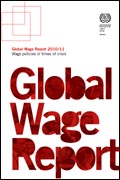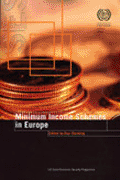Studies in this week’s Hutchins Roundup find high corporate demand for credit lines drawdowns lowered bank stock returns, raising the minimum wage sends more students to community college but fewer to universities, and more.
Want to receive the Hutchins Roundup as an email? Sign up here to get it in your inbox every Thursday.
Bank stock returns fell during COVID, in part due to firms drawing down lines of credit
During the pandemic, many firms facing declining cash flows drew down preexisting credit lines they had arranged with banks. Stock market investors perceived this unprecedented spike in demand for drawdowns of credit lines as a risk for bank balance sheets, say Viral Acharya and Robert Engle III of NYU and Sascha Steffen of the Frankfurt School of Finance & Management. The authors create a measure of balance-sheet liquidity risk that includes the amount of undrawn credit to which banks have committed, a factor not usually taken into account by traditional measures of banks’ risk exposure. They find that a 1 standard deviation increase in balance-sheet liquidity risk is associated with about a 5% decrease in stock returns. Although the effect of undrawn credit on stock prices occurs only during economic downturns like the Great Recession or the COVID recession, the authors warn that the large amount of corporate debt accrued during the pandemic could lead to another rush on open lines of credit. Regulators should assess banks’ exposure to credit-line drawdowns to prepare for this possibility, they say.
Increasing minimum wage increases community college enrollment, lowers university enrollment
Using 136 minimum wage changes in Canada, Diana Alessandrini and Joniada Milla from the
IZA Institute of Labor Economics document that increases in the minimum wage reduce enrollment in post-secondary education overall and also change its composition: a 10% increase in the minimum wage increases community-college enrollment by 6% but reduces university enrollment by 5%. The negative effect on university enrollment is driven by recent high-school graduates with low parental education. As the minimum wage increases, the increasing opportunity cost of education discourages enrollment. Individuals whose parents completed university are not sensitive to minimum wage changes. On the other hand, the positive effect on community-college is driven by older students. An increase in the minimum wage increases competition in the labor market, leading older students to return to or stay in college to gain additional skills. Given the difference in outcomes for younger and older students, whether a change in minimum wage policy is desirable depends on the “political weight assigned to each outcome,” the authors conclude.
Accounting for cross-county spending implies greater sensitivity of local economy to housing wealth
Although 62% of consumer spending occurs in the counties where consumers live, about 80% occurs within a 100-mile radius of their home county—suggesting that measures of local consumption that ignore spending spillovers across borders miss a significant portion of consumer spending. Using individual credit, debit, and prepaid gift card transaction data, Abe Dunn and Mahsa Gholizadeh of the U.S. Bureau of Economic Analysis construct a measure of spending flows across counties to reassess the impact of local declines in housing wealth on spending and employment during the Great Recession. They find that firms are affected by falling housing wealth not just in the county where they are located, but in all the counties where their customers reside. Not accounting for these spillovers caused previous researchers to underestimate the impact of declines in local housing wealth on employment by 26% and on spending by 17%, the authors say.
Chart of the week: Global industrial production has recovered quickly compared to the Great Recession
Quote of the week:
“The overall recovery in economic activity since last spring is due importantly to unprecedented fiscal and monetary policy actions, which have provided essential support to households, businesses, and communities. The recovery has progressed more quickly than generally expected, and forecasts from FOMC participants for economic growth have been revised upwards notably since our December summary of economic projections. In commenting on the stronger outlook, participations noted progress on vaccinations as well as recent fiscal policy,” says Jerome Powell, Chairman of the Federal Reserve.
“Nonetheless, the bulk of the committee… doesn’t show an [interest] rate increase during this period… part of that is wanting to see actual data, rather than just a forecast at this point. We do expect that we’ll begin to make faster progress on both labor markets and inflation as the year goes on… but we’ll have to see it first.”











Commentary
Hutchins Roundup: Stocks, minimum wages, and more
March 18, 2021